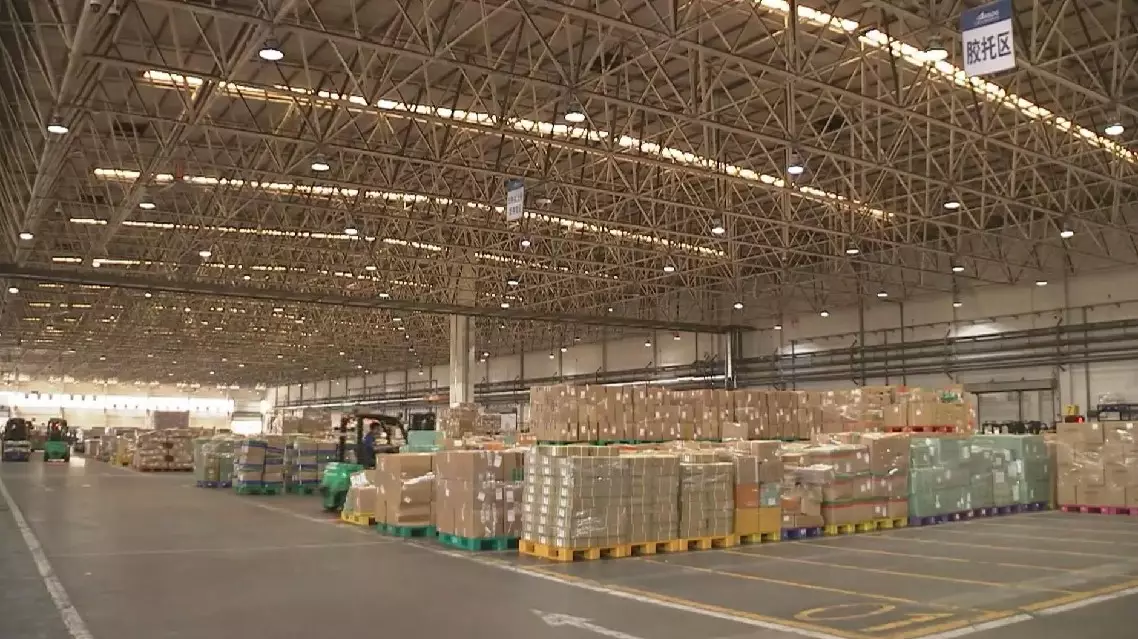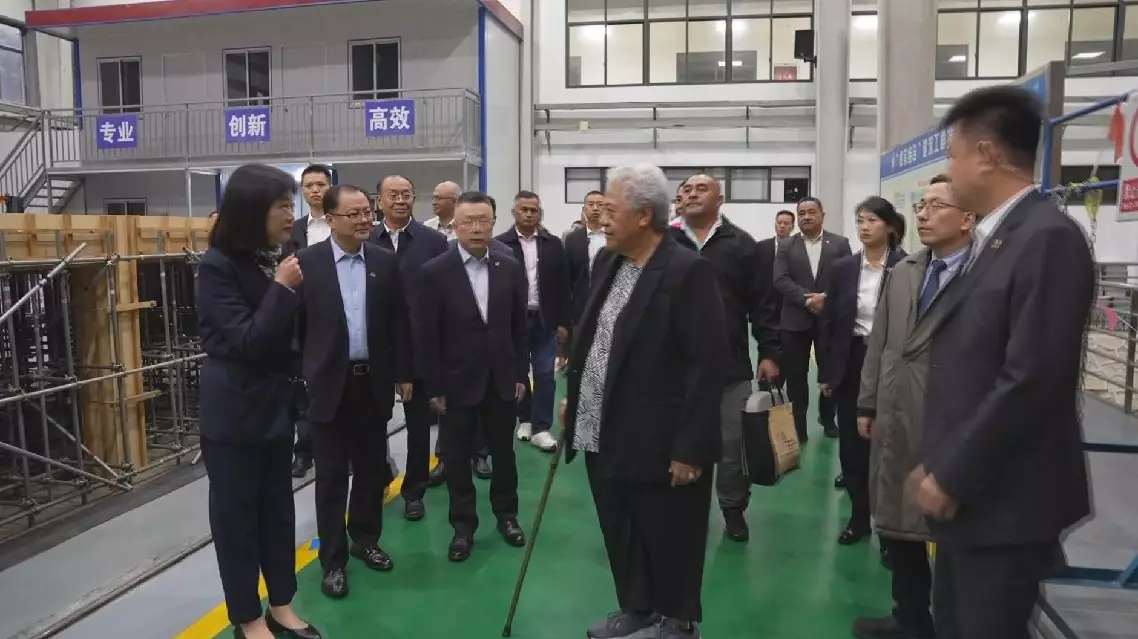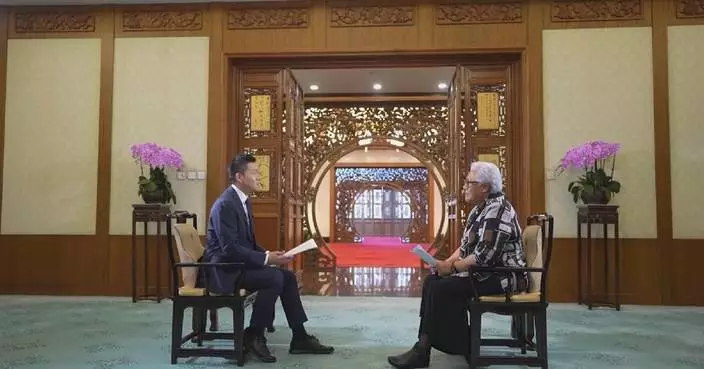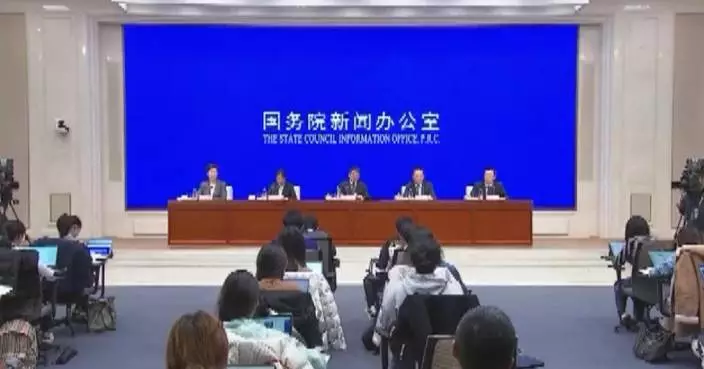China's logistics sector posed comprehensive recovery in various fields and links in the first 10 months of the year, according to the latest official data released by the China Federation of Logistics and Purchasing (CFLP) on Friday.
From January to October, China's social logistics reached 287.8 trillion yuan (about 39.8 trillion U.S. dollars), a year-on-year increase of 5.7 percent, according to the data.
The total revenue of the sector rose by 3.8 percent year on year to 11.3 trillion yuan (about 1.56 trillion U.S. dollars) in the 10-month period, the data showed.
"Based on the various logistics indexes available in October, we can see the recovery of the logistics sector is extending to more industries and links. So, it's picking up on a full scale," said Liu Yuhang, director of China Logistics Information Center.
Specifically, the basic service fields such as rail transport, road transport, loading and unloading maintained stable operations in October, with their business volume indexes all above the 50 percent threshold and on the rise over the previous month.
The air transport industry launched 18 new international freight routes in October. With over 30 additional inbound and outbound flights operated per week, the total volume of air cargo and mail rose by 19.9 percent year on year in the month.
Driven by policies and subsidies to encourage consumer goods trade-ins, the e-commerce logistics index rose to an annual high of 115 in October. A total of 16.31 billion parcels were handled in the month, up 24 percent year on year.
"At present, China already has more than 10,000 class-A logistics enterprises. As they continue to develop, logistics services have become more and more specialized and efficient," said Jiang Xu, dean of School of Logistics at Beijing Wuzi University.
Based on survey results, the operating revenue of key logistics enterprises in the first 10 months increased by 4.8 percent year on year.
It is worth noting that due to factors such as rising raw material prices and increase in the number of service workers, the growth in operating costs of logistics enterprises accelerated in October, so their profit growth has slowed down.
The cost of key logistics enterprises per 100 yuan (13.8 U.S. dollars) of operating revenue from January to October increased by 0.4 yuan (5.5 U.S. cents) compared with that in the January-September period, the data showed.
However, logistics enterprises generally remained optimistic about their overall performances of the year. The business activity expectation index reached 57.7 percent in October, rising for the third consecutive month.
"The market expectations have further improved. Especially, the intensified implementation of incremental policies has boosted the recovery of the entire market. Besides, based on the operation of the logistics market in the past few months, the internal driving forces of the market have also further strengthened," said Cai Jin, vice president of the CFLP.

China’s logistics sector sees all-round recovery in January-October
China has made much more progress at a much faster speed in transformative areas thanks to the reform approach taken by the Chinese government to achieve efficient and appropriate governance, said Samoan Prime Minister Fiame Naomi Mata'afa in an interview in Beijing on Wednesday.
Mata'afa just wrapped up her sixth visit to China from Nov 20 to 28. During the latest trip, she visited eight cities in China, including Taizhou City in east China's Jiangsu Province, the cities of Shenzhen and Huizhou in south China's Guangdong Province, and Beijing.
In an interview with the China Media Group, she said she has been deeply impressed by China's achievements in renewable energy and information technology, and the government's reform mindset and measures.
"What is notable always with China is the pace at which it changes. My main takeaway as a leader with a sort of a broad overview is that internationally there are two key platforms for development. Energy being one of them, especially the renewable energy. And secondly is the whole digital and information technologies. These are the transformative platforms, of which many countries now are premising their development. It's the new way of work. So everyone is very much on board. But you see in China, how much more they're doing, how much faster they are responding. From a government perspective, what I'm really appreciating is the reform approach, being always mindful, given the information flow of what government needs to do, how it can respond. But what strikes me is a mindset of wanting to be right on top of that information and reconfiguring how government works to more efficiently and appropriately respond to the needs, whether they be internal or external. So, that has been one of my major takeaways," Mata'afa said.
Mata'afa officially started her nine-day visit in Taizhou, where she visited the Taizhou Polytechnic College and a green energy company. She spoke highly of China's investments in education, saying it helps not only with Chinese modernization, but also with the preservation of traditional Chinese culture.
"We were taken to a centralized data center, where the information is coming in to better advise the administrations on how to respond. You mentioned the students. Once again, it's a level of investment. What I noticed was a very broad scope of learning, not just academia, but also cultural elements, value elements. It's good to see. On one side, it seems very modern, right? In terms of aspiration, abilities and what has been able to be achieved. But on the other side, to be very careful to preserve principles and values of Chinese culture," Mata'afa said.
In Shenzhen, Mata'afa visited the Futian Mangrove National Nature Reserve. As a leader who prioritizes the protection of mangrove in the Pacific island nation, she said the nature reserve has provided an advanced and inspiring approach that focuses on the ecosystem as a whole, rather than just mangrove.
"What I saw was much more advanced, right? Progress in the management of mangroves. It has to do with resources, of course. But what I particularly enjoyed, and I don't think we have paid as much attention in terms of our mangrove work, is providing the environment for the other animals, the birds, the fishes and so forth. We're more still at the point where we just want to ensure that we don't lose the mangrove. But the further development that has been done at that center, really it's become a refuge or a place where the animal life can thrive. We see a bit of it in Samoa, but it's not being done intentionally. We just try and ensure that we don't lose the mangrove in the first instance. But I think our planning needs to be a lot more extended about the ecosystem that is supported by our mangroves. That's a huge project. And it's a great demonstration of what can be done with our mangroves, and the benefits that it derives," Mata'afa said.

Samoan PM commends China's efficient governance for boosting rapid progress in transformative areas










